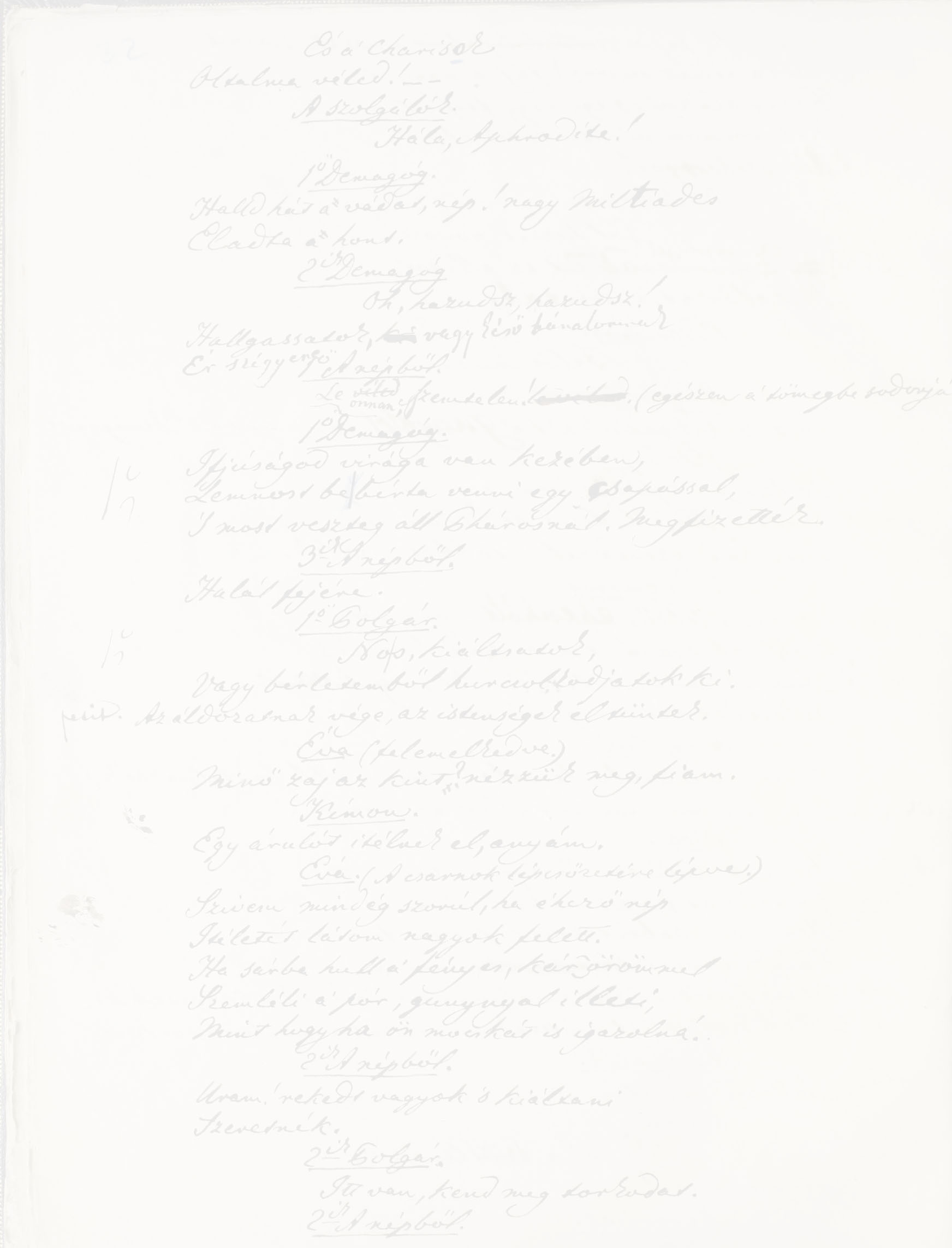


 Imre Madách passed away on 5 October 1864, and he was buried on 7 October in the
modest family tomb in Alsósztregova.
1 In 1909 Nógrád county decided to erect a memorial worthy to their
great son. The county’s general assembly offered 1000 crowns for the purpose,
and in addition they launched a national collection for a grave suitable to pay
tribute to the great author. Collection sheets were also sent out with the call.
2 The collection, however, was unsuccessful, and then the world war
and the
borders redesigned by the peace treaties overshadowed the case for some time.
Imre Madách passed away on 5 October 1864, and he was buried on 7 October in the
modest family tomb in Alsósztregova.
1 In 1909 Nógrád county decided to erect a memorial worthy to their
great son. The county’s general assembly offered 1000 crowns for the purpose,
and in addition they launched a national collection for a grave suitable to pay
tribute to the great author. Collection sheets were also sent out with the call.
2 The collection, however, was unsuccessful, and then the world war
and the
borders redesigned by the peace treaties overshadowed the case for some time.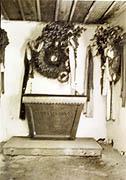 The president in his response to the greetings of the locals anounced, that he
respects Madách not because he was of Slovak origin, but because he sought the
man in the man. Although the next day in Losonc, at the reception of the
deputies of the local Hungarians he spoke about Madách as a Hungarian poet, the
words of President Masaryk aroused great indignation in the Hungarian public
opinion. The situation caused by poor drafting could not be improved by the fact
that the old president – according to press reports – spoke in Hungarian in a
Hungarian environment. The Pesti Hírlap rejected the claim in an editorial.
4
The historian Lajos
Gogolák, an expert of Slovak literature and history, refuted Madách’s Slovak
identity in a data-rich study in the November 1930 edition of Magyar Szemle.
5
However, we can claim with certainty that it was the presidential visit and its
press coverage which turned the attention to the abandoned and neglected grave
of the great author.
The president in his response to the greetings of the locals anounced, that he
respects Madách not because he was of Slovak origin, but because he sought the
man in the man. Although the next day in Losonc, at the reception of the
deputies of the local Hungarians he spoke about Madách as a Hungarian poet, the
words of President Masaryk aroused great indignation in the Hungarian public
opinion. The situation caused by poor drafting could not be improved by the fact
that the old president – according to press reports – spoke in Hungarian in a
Hungarian environment. The Pesti Hírlap rejected the claim in an editorial.
4
The historian Lajos
Gogolák, an expert of Slovak literature and history, refuted Madách’s Slovak
identity in a data-rich study in the November 1930 edition of Magyar Szemle.
5
However, we can claim with certainty that it was the presidential visit and its
press coverage which turned the attention to the abandoned and neglected grave
of the great author.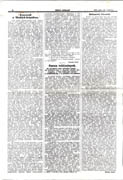 Zsolt
Harsányi, who was just writing a biographical novel on Imre Madách, visited
Alsósztregova in the summer of 1932, and published an article on the grave with
the title Wreaths in the Madách crypt.
6 In the small Catholic cemetery he found a very simple, whitewashed
and shingle-roofed building. The rusty lock of the door could be opened only
with the help of locksmiths. Inside, a simple stone table-altar, in the vault
beneath the floor are buried the members of the Madách family. The side wall of
the vault had collapsed during an earlier funeral, and one could see the
coffins, all in very poor conditions. Next to the great poet lay his mother, his
son Aladár Madách, the wife of the latter, and the unidentifiable remains of the
earlier deceased family members. Above the stone table, the dried relics of
piety: the wreaths of President Masaryk and his daughter.
Zsolt
Harsányi, who was just writing a biographical novel on Imre Madách, visited
Alsósztregova in the summer of 1932, and published an article on the grave with
the title Wreaths in the Madách crypt.
6 In the small Catholic cemetery he found a very simple, whitewashed
and shingle-roofed building. The rusty lock of the door could be opened only
with the help of locksmiths. Inside, a simple stone table-altar, in the vault
beneath the floor are buried the members of the Madách family. The side wall of
the vault had collapsed during an earlier funeral, and one could see the
coffins, all in very poor conditions. Next to the great poet lay his mother, his
son Aladár Madách, the wife of the latter, and the unidentifiable remains of the
earlier deceased family members. Above the stone table, the dried relics of
piety: the wreaths of President Masaryk and his daughter.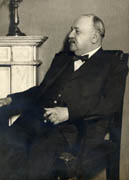 On the summer of
1932 the historian and financier Lajos Horánszky (1871–1944), ordinary
member of the Kisfaludy Society and a great admirer of Imre Madách visited
Alsósztregova, and saw with his own eyes the terrible conditions of the grave.
On the summer of
1932 the historian and financier Lajos Horánszky (1871–1944), ordinary
member of the Kisfaludy Society and a great admirer of Imre Madách visited
Alsósztregova, and saw with his own eyes the terrible conditions of the grave.
 The Madách descendants, Imre Madách’s granddaughter Flóra, her husband dr Pál
Lázár and their daughter lived in rather poor conditions in the Madách castle of
Alsósztregova. The estate was burdened with a huge mortgage: it was obvious that
the family will not build a new grave with their own effort.
The Madách descendants, Imre Madách’s granddaughter Flóra, her husband dr Pál
Lázár and their daughter lived in rather poor conditions in the Madách castle of
Alsósztregova. The estate was burdened with a huge mortgage: it was obvious that
the family will not build a new grave with their own effort.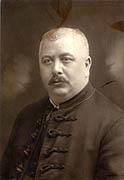 János
Giller (1886–1956), lawyer and Slovak regional deputy said a bold and
straight speech on behalf of the Madách Company of Losonc: the Hungarians living
in “Slovensko” proudly boast with the great poet and thinker as a fellow
Hungarian.
9
János
Giller (1886–1956), lawyer and Slovak regional deputy said a bold and
straight speech on behalf of the Madách Company of Losonc: the Hungarians living
in “Slovensko” proudly boast with the great poet and thinker as a fellow
Hungarian.
9  Alajos
Rigele studied at the Art Academy in Vienna. In his last school year he won with
the memorial grave of Péter Pázmány the Vilmos Fraknói Award as well as a
two-year study trip to Rome. In 1911 he definitely settled in Pozsony. After the
world war his main source of livelihood were the commissions of the citizens of
Bratislava, about one-sixth of his works are tombstones. The 1930s brought
change in his life, when various associations and institutions also discovered
his work. Rigele worked with a wide variety of materials, stone, bronze, wood,
but according to his monographer Zsolt Lehel his artistic qualities were best
expressed in marble.
10
In his representations he regularly stressed opposites: a frequent motif in his
works are the smooth figures rising from a rough background. He preferred to
stress the contrast of agility and calmness – wrote about him Zsolt Lehel,
who considers Rigele as the most important sculptor of Pozsony.
Alajos
Rigele studied at the Art Academy in Vienna. In his last school year he won with
the memorial grave of Péter Pázmány the Vilmos Fraknói Award as well as a
two-year study trip to Rome. In 1911 he definitely settled in Pozsony. After the
world war his main source of livelihood were the commissions of the citizens of
Bratislava, about one-sixth of his works are tombstones. The 1930s brought
change in his life, when various associations and institutions also discovered
his work. Rigele worked with a wide variety of materials, stone, bronze, wood,
but according to his monographer Zsolt Lehel his artistic qualities were best
expressed in marble.
10
In his representations he regularly stressed opposites: a frequent motif in his
works are the smooth figures rising from a rough background. He preferred to
stress the contrast of agility and calmness – wrote about him Zsolt Lehel,
who considers Rigele as the most important sculptor of Pozsony.
Rigele, who gladly accepted the commission, in early 1936 prepared two models
and sent their photos to Ede Telcs. One of them represents an eagle taking off,
while the other a towerin youngster.
11
The judges, Albert Berzeviczy, Géza Voinovich and Lajos Horánszky (we cannot
call them a jury, as they never officially came together) accepted the second
plan. Horánszky asked the artist to perform the spring survey and submitt he
budget in the spring. The statue should be ready by autumn, so that it could
stand in its place by All Saints’ Day.
12
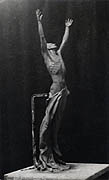 In early summer
1936 the sculptor already sent a photo on the clay model to Ede Telcs, asking for his professional opinion. As he wrote, he
planned agile drapes, which even symbolically stood in contrast to the relaxed
arch of the body, in which he intended to shape much longing.
13
In early summer
1936 the sculptor already sent a photo on the clay model to Ede Telcs, asking for his professional opinion. As he wrote, he
planned agile drapes, which even symbolically stood in contrast to the relaxed
arch of the body, in which he intended to shape much longing.
13
 In May 1936 Alajos Rigele had a site visit in Alsósztregova. He found the grave
in a neglected condition. Due to the careless foundation and masonry the ground
water destroyed it so much that it had to be rebuilt.
In May 1936 Alajos Rigele had a site visit in Alsósztregova. He found the grave
in a neglected condition. Due to the careless foundation and masonry the ground
water destroyed it so much that it had to be rebuilt.
In summer 1936
Rigele and his son, the architect László Rigele undertook the preparation of the
Madách memorial and its installation in site, as well as the necessary
rebuilding of the grave. The statue on the memorial and Madách’s portrait relief
were made of bronze, and the pedestal of a time-resistant green sandstone. In
the design of the memorial, the artist strived after a monumentality expressed
with the simplest tools, as Madách’s personality was also without any artificial
attitude. The statue, or in Regele’s beautiful words, the spirit of the Man
longing for the sky, is standing on top of the grave. The two Rigeles undertook
to control the entire working process. The total cost of the works were
estimated at 53,697 crowns.
We have only limited data on the financing of the memorial. One reason is that
the organizers wanted to preserve the appearance of private initiative.
Lajos Horánszky, the coordinator of the works certainly reported about
them to the Kisfaludy Society, but the documents of the society survived
incomplete, as they were partially destroyed at the turn of 1944/45, during the
siege of Budapest. The costs were probably entirely covered from the funds
collected in Hungary. The largest sum was offered by the Hungarian Academy of
Sciences, which contributed to the erection of the Madách memorial with at least
3700 pengős from the interests of the Baron Podmaniczky Zsuzsanna Foundation.
18
The other sources are still unknown, or waiting for exploration.